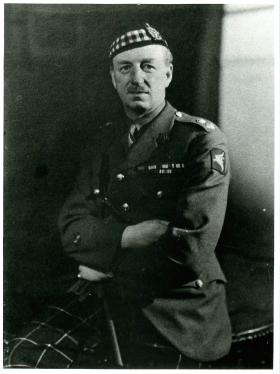
7th Battalion Kings Own Scottish Borderers (KOSB)
7th Battalion Kings Own Scottish Borderers (KOSB)
The history of the King’s Own Scottish Borderers goes back to 1689 when it was formed as the Edinburgh Regiment, and over the next two hundred years it served under various guises; the 25th (Edinburgh) Regiment of Foot from 1697, the Sussex Regiment in 1782, and the King’s Own Borderers in 1805, before their Scottish identity was added to this title in 1887. The First World War saw the Regiment’s size increase from two to twelve Battalions, and the 7th Battalion, K.O.S.B was amongst this number and fought with distinction on the Western Front, suffering a total of 970 casualties throughout the war. In the administrative cull that followed the Armistice, all the battalions, except the 1st and 2nd, were disbanded.
Twenty years later the Battalion was reincarnated. The Munich Crisis of 1938 resulted in the Territorial Army being doubled in size, with each of its battalions forming a duplicate, and with numbers consequently swelling high in the 5th Battalion, K.O.S.B. (TA) the unit was split in two and the 7th Battalion, K.O.S.B. was formed from the other half. In April 1939, the task of raising the Battalion fell to Lieutenant Crosthwaite of the 1st Battalion, K.O.S.B, soon to occupy the post of Adjutant, and he was assisted by the 5th Battalion and retired officers of the Regiment in recruiting from their area. During these early days the regional character of the Battalion could be identified down to Company level, with ‘A’ and ‘B’ Companies drawing most of its men from Wigtownshire, ‘C’ Company from Kirkcudbrightshire, and ‘D’ Company drew all of its establishment from Dumfriesshire. By the end of May the Battalion was up to full strength and on the 17th June it received its first commander, Lieutenant-Colonel The Earl of Galloway.
The outbreak of war in September 1939 called for reorganization of the Territorial Army and consequently the 7th Battalion, K.O.S.B. Up until now the Battalion had been scattered about its home area in no fewer than 19 separate billets, but by the end of September they converged at St. Boswell’s where training began in earnest; largely consisting of route marches because target practice was restricted due to a lack of ammunition. A number of the Battalion’s men were lost, as was a sizeable percentage of the TA, due to their skills in industry taking a priority over their military service. In their place came a large draft of professional soldiers from the North of England.
The end of the year saw a move to the area encompassing the Forth Bridge, and the training regime intensified over the following three months. Lieutenant-Colonel Machin, formerly of the Regimental Depot, took command of the Battalion on the 28th March 1940, while the Earl of Galloway was appointed Honorary Colonel to the Battalion. On the 12th May the 7th Battalion, K.O.S.B, consisting of 574 all ranks, moved to Marlborough in Wiltshire with its parent formation, the 44th Infantry Brigade. At this time the British Expeditionary Force were fighting in France and the latest news was far from encouraging. The Battalion was relocated to Byfleet, 25 miles to the south of London, where it remained on full alert and was given orders to be prepared to move to London or one of the many local airfields at very short notice. In July the 7th Battalion, K.O.S.B. were charged with the defence of the north shore of the Blackwater estuary, spanning some 12 miles, and for the next fortnight they dug defences along the coast to counter a possible invasion. Similar duties along a five mile front from Brightlingsea to Clacton-on-Sea followed in October.
Most of 1941 was spent around the naval base of Lowestoft. November saw a move to the North of England to Wooler in Northumbria, where many of its men now hailed from. With little else to do except train further, the 7th Battalion, K.O.S.B. participated in seven major exercises at Battalion or Brigade level during the first half of 1942. October saw the reorganization of the 15th (Scottish) Infantry Division, of which the Battalion was a part, and in the ensuing shake up they were ordered to join 228 Brigade stationed in the Shetlands, serving with the Orkney and Shetland Defences (OSDEF). Based at Sumburgh, at the very south of the island where they protected an important RAF base, the climate did not make for successful training exercises and so as much entertainment was laid on for the men as possible. The winter days were very short and very long in the summer, with it staying light until after midnight, furthermore it was a rare event when the weather did not include one of the elements of rain, wind, or fog. Fortunately the RAF were very understanding of their plight and allowed them access to their facilities.
In July 1943 the 7th Battalion, K.O.S.B. were moved to Orkney, a more pleasant place. In spite of the presence of the large naval base in Scapa Flow, always busy with British and American warships, there was little in the way of German interference with the exception of reconnaissance flights. In November Captain George Gourley, Second-in-Command of ‘D’ Company, attended a two-week course in Edinburgh and during his stay he was informed by a good friend that his Battalion was shortly to be converted to the Airborne role. Official confirmation followed and that month saw the move to Woodhall Spa in Lincolnshire, home of the 1st Airlanding Brigade. Though it was probable that no one in the Battalion had even seen a glider before this time, all were delighted at the prospect after their long four year tour of the British Isles.
The conversion process went well and the men began training with gliders to become accustomed to their new role. Any men who failed the medical tests to determine their suitability for the glider-borne lifestyle were replaced by men from the Regiment, or from other Scottish units. Unfortunately a disaster befell the Battalion in the early hours of the 4th April 1944, during an exercise codenamed ‘Dreme’, when a Stirling towing a Horsa carrying No.3 Platoon hit a tree on high ground and crashed, killing all aboard. 26 Borderers were killed, together with 6 RAF personnel and 2 glider pilots.
On the 17 September 1944 the battalion took off on Operation Market-Garden, and landed in Holland, where they fought a ferocious battle against superior numbers of German units, before being forced to withdraw back across the Lower Rhine on the night of the 25th/26th September.
After Arnhem the 7th Battalion, K.O.S.B. flew with the 1st Airlanding Brigade and Divisional HQ to accept the surrender of the German forces in Norway as part of Operation Doomsday. The weather during the flight was very bad and one of the Battalion’s Stirlings crashed after colliding with a large pine tree. There were survivors, but four men drowned, including an Arnhem veteran.
Upon returning home the Battalion was officially disbanded on 28 November 1945, its men scattered amongst the 2nd Battalion, K.O.S.B, the 4th Battalion The Black Watch, No.10 Infantry Holding Battalion at Edinburgh, and various units serving with the British Army of the Rhine.
Commanding Officers
1939-40 Lt-Col The Earl of Galloway
1940-42 Lt-Col L. F. Machin
1942-43 Lt-Col G. Ilderton
1943-44 Lt-Col. R. Payton-Reid
1944-45 Lt-Col. R. D. Sellon
With thanks to www.pegasusarchive.org.uk for the main part of this history.
Read MoreNewsletter Signup
Donate
Make a donation to Airborne Assault ParaData to help preserve the history of The Parachute Regiment and Airborne Forces
The Airborne Shop
The Airborne Shop is the official shop of Support Our Paras (The Parachute Regiment Charity RCN1131977).
Profits from all sales made through our shop go directly to Support Our Paras, so every purchase you make with us will directly benefit The Parachute Regiment and Airborne Forces.

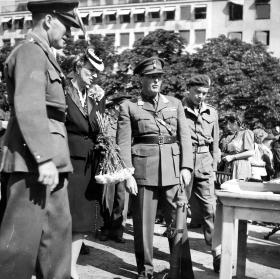
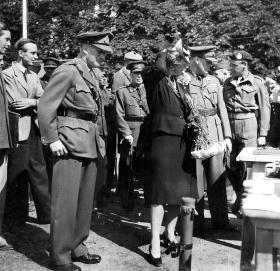
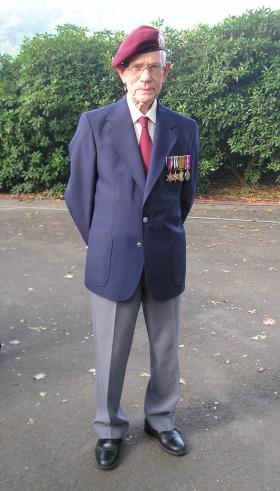
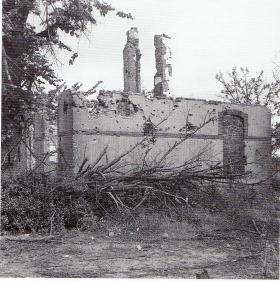
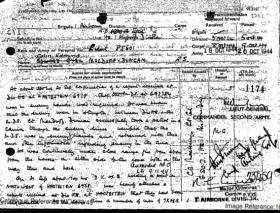
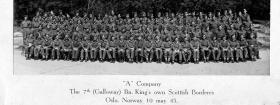
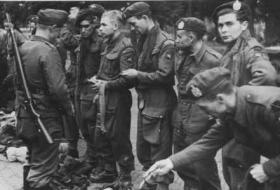
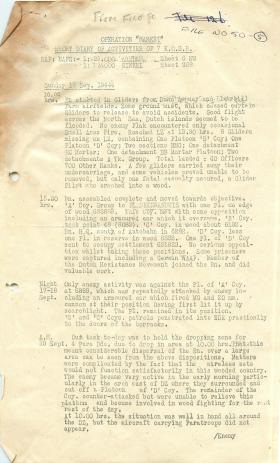
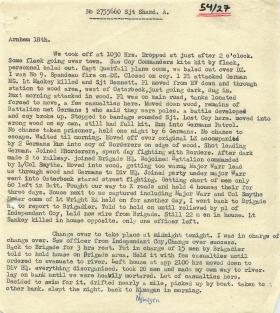
Latest Comments
There are currently no comments for this content.
Add Comment
In order to add comments you must be registered with ParaData.
If you are currently a ParaData member please login.
If you are not currently a ParaData member but wish to get involved please register.